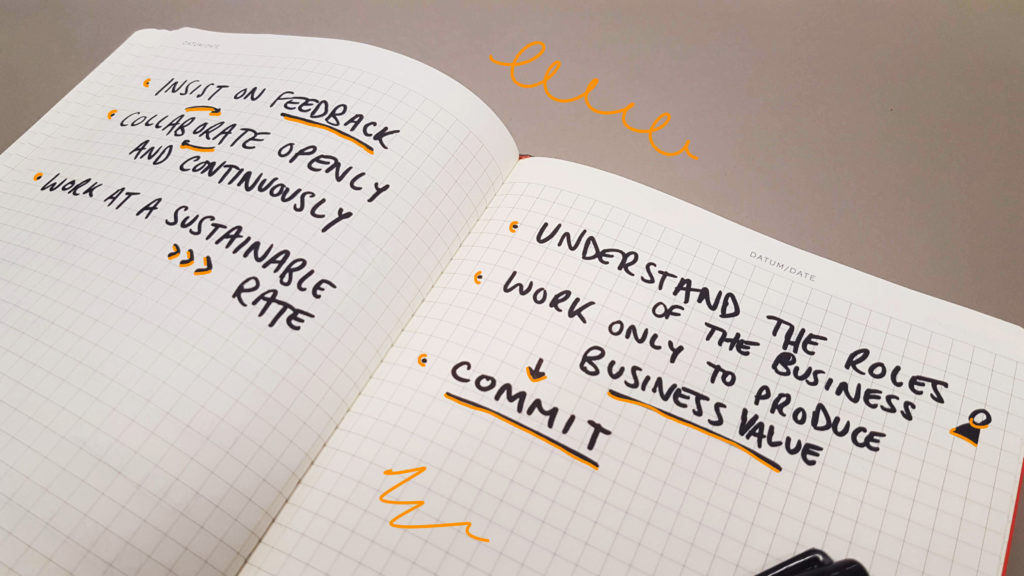This article is the fourth part of a 12-part series featuring snippets from my new book, The Agile Secret.
Stepping out of the Waterfall
People who meet in a place called “Snowbird, Oregon” are probably already quite cool. The 17 people in Snowbird on 11th February 2001, had come because of an email. Previously, in September 2000, Bob Martin from Object Mentor in Chicago wrote to a few tech insiders:
I’d like to convene a small (two-day) conference in the January to February 2001 timeframe here in Chicago. The purpose of this conference is to get all the lightweight method leaders in one room. All of you are invited; and I’d be interested to know who else I should approach.
“Lightweight” was the working title for all the software development methodologies of the time that tried to step outside of the established “waterfall” method. At the Snowbird meeting, these gurus batted around how they could escape corporatism, legal wrangles and frustration with bosses because software development was behind schedule.
They started by writing down a few simple bullet points:
- Insist on feedback
- Collaborate openly and continuously
- Work at a sustainable rate
- Work only to produce business value
- Understand the roles of the business and developers
- Commit

The Agile Alliance
After lunch, Martin Fowler and Dave Thomas started to work out a format for expressing these pithy statements. They came up with the following: “We prefer X over Y.”
As the rest of the group drifted back after lunch and into the afternoon they had come up with four bullets, plus an introduction:
“We are uncovering ways of developing software by doing it and by helping others to do it. We value:
- Individuals and assertions over process and tools
- Working software over comprehensive documents
- Customer collaboration over contract negotiation
- Responding to change over following a plan”
This group called themselves “The Agile Alliance” and tagged their bullets “Manifesto for Agile Software Development”.

As my wheels touched down at Airbus HQ in Toulouse for a client meeting 17 years later, I could see over a security fence that the Snowbird group’s impact had gone way beyond software. We were meeting to discuss a keynote for some of Airbus’s top military brass. And waiting for me on the runway was the latest Airbus Beluga XL. The Airbus executives shared with me that this plane had been built using agile methodologies, reducing the work done by around 30%. On a plane whose development costs were around a billion euros, that’s quite a saving.
Way beyond software, a whole crew of aerospace engineers have used this simple manifesto to produce a highly complex physical thing. And if we can make one of the world’s biggest planes in an agile way, surely we can use it for pretty much everything in between? Is there seriously anything that doesn’t work in agile?
If this is the case, the next question to ask is: How?
- How can we do agile in different sectors? In banking, property, law, engineering, marketing?
- How can we do agile across functions? In accounts, HR, procurement, sales?
- How can we do agile in individual roles? As a team assist, a front-office financial expert, a leader?
Can you hack it?
In our company, the breakthrough came when we had large amounts of written documents to create as part of designing a workshop. We realised that one person working through all these over a number of weeks had none of the excitement and urgency of a short-term blast. Therefore, with barely any knowledge of agile we created our own rules for what we call a “hack”:
- We are doing nothing else. No phones. No emails.
- Keep it short. Max two days. Ideally, one.
- Hacks are not for strategy. They are for deliverables.
- We must have a very clear list of deliverables at the start, including exact spec.And we borrowed something I’ve always loved from the way the Catholic Church selects a pope.
- No-one leaves until all the work is finished.
In short, it worked. But why? Well, we had restored something that has been lost in the age of email. Something so powerful that it drives us every day. Something so simple, so addictive, we can crave it like a drug. We had re-harnessed the pure, adrenaline-fuelled, serotonin-boosting, flow-capturing beauty that is urgency.
Part 5: Get It Done
Download The Agile Secret on Amazon Kindle here.
